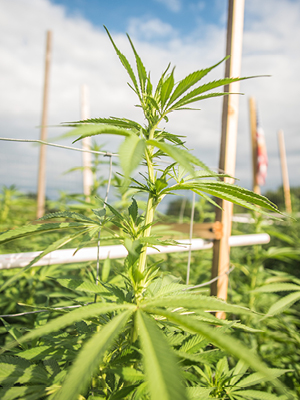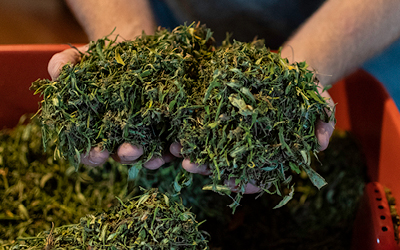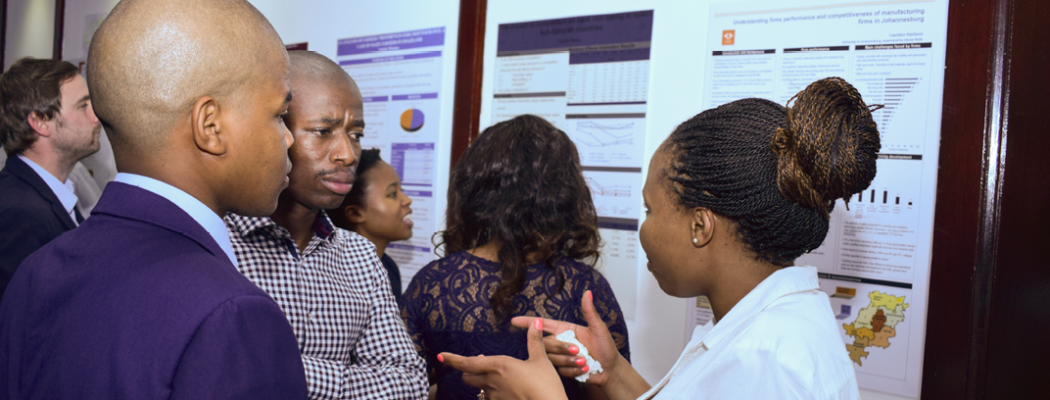Developing a Malawi–South Africa value chain for industrial hemp: What are the challenges?
Diversifying the agricultural production in sub-Saharan Africa is important for the combat against poverty and climate change. In Malawi there are plans for legalizing the cultivation of industrial hemp, which would at best bring possibilities for Malawi and South Africa to complement each other in the hemp production and trade. However, creating the value chain for industrial hemp is not an easy exercise. What are the challenges and things to consider to make it work?
Industrial hemp offers strong opportunities for both countries as a new niche market
The value chain complementarity between Malawi and South Africa is strong
However many challenges exist before such potential can be realised
Lack of official data available on the demand of different end-use products makes it difficult to plan the cultivation
There is no contract growing support system or concrete possibilities for value chain upgrading currently available to Malawian smallholder farmers, and the cost of inter-regional transport is high
Pipe dream or realistic opportunity
Interest in industrial hemp has revived in the past 20 years. In recent years the Malawian government has had interest in legalizing its cultivation as the crop is seen as a profitable alternative cash crop for small-scale farmers, and a more sustainable option than tobacco farming.
Industrial hemp market realities, however, differ substantially from the hype generated by lobbyistsand the currently thin markets, volatile prices and low-traded volumes that characterize what is a niche or novel market. Commercially viable options and future potential opportunities do exist if the crop becomes a mainstream feedstock for multiple consumer and industrial downstream goods.
However, complexities in the cultivation process require the end use of an industrial hemp crop to be determined upfront. In addition, given the structure and operation of Malawi’s smallholder agricultural sector, any attempt to diversify into industrial hemp cultivation would require finding and creating contract buyers, input support (seed, fertilizers, pesticides, technical support) and supportive extension services.
 Complicated calculations
Complicated calculations
Much of the hype around industrial hemp is centred on the plant’s green credentials. This market is, however, nascent. Most existing demand is for industrial hemp seed for human consumption, industrial hemp oil as an input into personal care products and cosmetics, and industrial hemp as a source of CBD oil (cannabidiol), a compound believed to have ‘miracle’ qualities in treating several health issues.
Competing end uses (CBD oil versus seed for example) result in different market prices and hence different relative margins. Different countries also show different market demand preferences.
To further complicate matters, cultivation for different end uses necessitates specific seed selection, unique planting densities, variable input usage, and differing harvesting times and techniques. As such, industrial hemp cannot be produced as a homogenous commodity product which can then be used for multiple purposes depending on demand. End-use determination is required upfront, so the market to be served must be known beforehand. These are difficult calculations to make given the lack of official data available.
While sizing up market potential is an issue, a more immediate constraint for Malawian smallholders is the lack of support system or possibilities for value chain upgrading. The smallholder farmers in Malawi’s tobacco sector are used to high levels of support and do not have the experience, the access to input markets or the cash flow to be able to operate in a traditional free market agricultural system.
Any diversification into industrial hemp would need to entail input supply support, contract buying, technical and agronomic services, and upgrading to ensure the right quality of harvest is produced for a given use.
The value chain complementarity between Malawi and South Africa is strong
From the South African perspective, the cultivation of industrial hemp of scale remains prohibited. The legal framework does, however, allow for importing industrial hemp feed stocks of various types under certain conditions. Malawi has a tiny manufacturing sector and has limited processing capabilities. In contrast South Africa has excess and unused capabilities in almost all downstream processing activities.
 In areas where existing capacity and capabilities do not exist there is an intensive R&D and technology development programme underway in South Africa in a multitude of industrial and consumer products based on industrial hemp inputs. In addition to productive capacity and capability, the South African industrial hemp market is growing.
In areas where existing capacity and capabilities do not exist there is an intensive R&D and technology development programme underway in South Africa in a multitude of industrial and consumer products based on industrial hemp inputs. In addition to productive capacity and capability, the South African industrial hemp market is growing.
The value chain complementarity between Malawi and south Africa is strong. The processing and demand for value-added downstream products and production exists in South Africa. As such the creation of an inter-regional industrial hemp value chain between Malawi and South Africa is feasible and could potentially be both lucrative and sustainable.
The unknowns persist
However, in addition to the above mentioned challenges, there are several unknown factors related to making industrial hemp a new income generator for Malawi and South Africa. The first and most constraining unknown that remains is whether the Malawian government will in fact vote to legalize industrial hemp cultivation.
The second potentially highly constraining unknown is the price of transporting unprocessed industrial hemp from Malawi to South Africa. The crop is a high-volume, low-weight transport product and Malawi is known as the country in Africa with the least competitive cross-border arrangements. This coupled with the well-known high transport costs characteristic of inter-regional trade across the Southern African Development Community (SADC) calls into question the final feasibility of such a value chain collaboration.
Any effort to establish a Malawi–South Africa industrial hemp value chain will require further end-use product research, contract growing package development, and offtake agreements with specific overseas companies
Third, the extent of current South African and global demand is unknown and future growth trends are difficult to assume. Entering the industrial hemp value chain in the near future should be based on a decision to operate in a niche market – with the potential for later participation in a mainstream scalable market if demand supports the growth.





